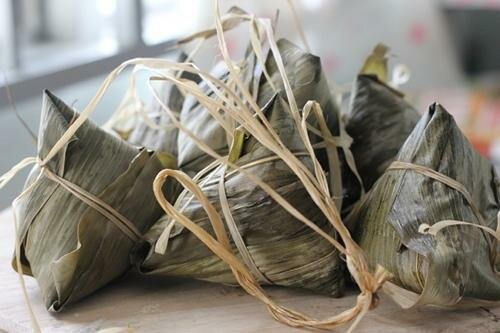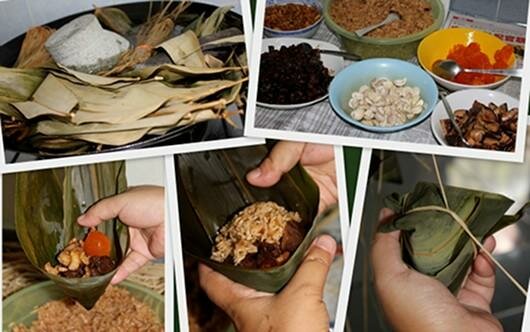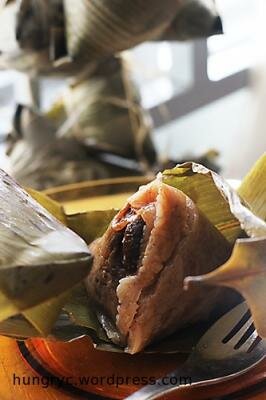The Duan Wu Festival – and Its Dumplings
Making rice dumplings is a family tradition in many Chinese homes. But did you know one practises dumpling-wrapping with sand, instead of rice?

It’s the fifth day of the fifth lunar month, the day we celebrate the Duan Wu Festival. There is a story of how it’s to remember the day that villagers threw in rice dumplings (zongzi) into the river so that the fishes wouldn’t eat this famous poet who was wrongly punished. The poet is unknown to me; all I know is that it’s the reason we have delicious dumplings every year.
There are many versions of dumplings, although it’s essentially made of rice. The one we have at home is made of glutinous rice, with belly pork, salted egg yolk, mushrooms, chestnut, and dried prawns. It’s not too heavy, as the dumpling would not be packed with too much glutinous rice.

In many Chinese homes, making rice dumplings is a family tradition. In my family, my sister Pamela is the one entrusted to wrap the rice dumplings because she does it best. My mother would prepare the ingredients, but she does the wrapping which is an art in itself. Pamela actually learnt it from a friend – she taught in remote Kapit, Sarawak and they had to make their own rice dumplings.
My grandmother tried to teach me how to wrap rice dumplings. She made me use fine sand instead of the actual rice. After I had tied them, she would turn the dumplings round and round – if the sand came out, it meant it was not properly done and I have to start all over again. It’s important because the dumplings are boiled, and water is not supposed to enter into the casing. I obviously failed the test, and have yet to master the art.
My sister can even tie the rice dumplings with one hand, and it has to be a live knot so that it’s easy to unravel. And she uses hemp strings, not plastic raffia strings because it’s chemical-free and safer for consumption.
These days, we only make enough for the family. But some people make enough to distribute dumplings to their relatives and friends.

We used to look forward to my late grand-aunt’s rice dumplings. She was the typical wealthy matriarch – the doyenne in a family of 13 or 15 children, and maybe 50 grandchildren. She had shoulder-length permed hair, and always put on lipstick and painted her toenails with bright colours. She chain-smoked, and visited the Turf Club every weekend.
When she arrived in her Mercedes-Benz for our great grandparents’ death anniversary prayers, she’d bring the biggest pears and oranges, and durians. She was real generous, and no one made bigger and fatter rice dumplings than her. Best of all, her rice dumplings were filled with pig’s trotters – I haven’t had dumplings like that since.
The other dumpling I like is kee chang, or yellow rice dumplings made with alkaline water. They are small and dainty, and are eaten with palm sugar syrup. I haven’t had those in awhile too.
Anyway, enjoy the rice dumplings come Duan Wu Festival, wherever you are and whatever variety you like. I like my dumplings with Lingham chilli sauce.
Editor’s note: Dumplings take on many forms in Chinese cuisine, from crispy fried pot stickers, to elegant wonton served in soup. The rice dumplings (zongzi) featured in this article are but one type of dumpling – it is, however, unique for its wrapping of bamboo leaves – or in Southeast Asia, screwpine (pandan) is used.
This post was first published on The Hungry Caterpillar in June 2010.

















